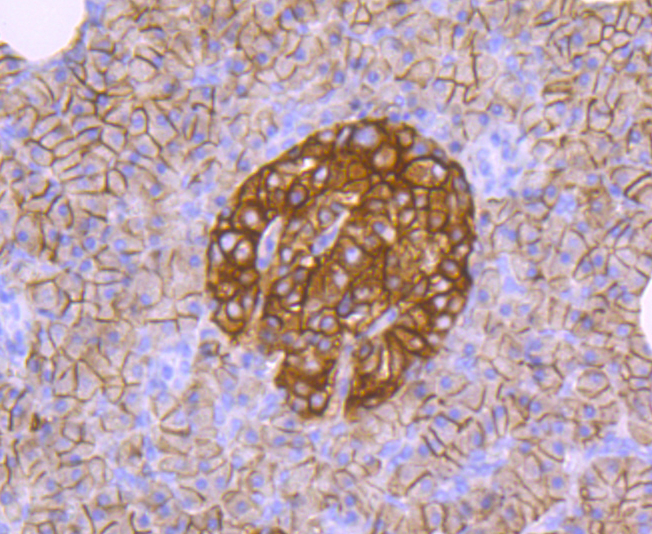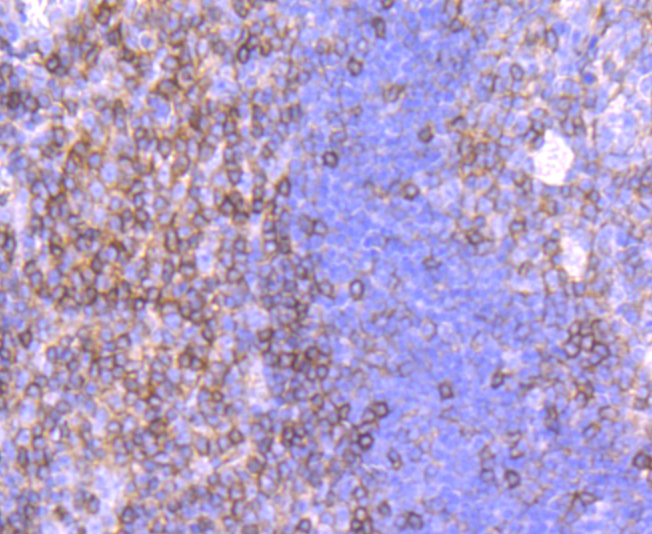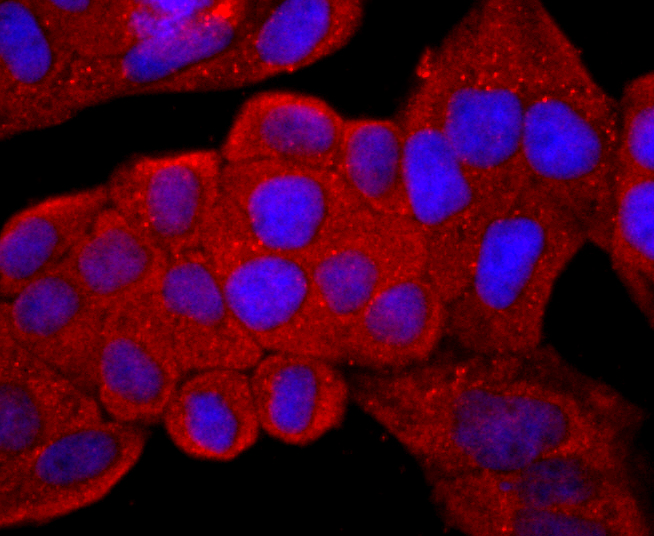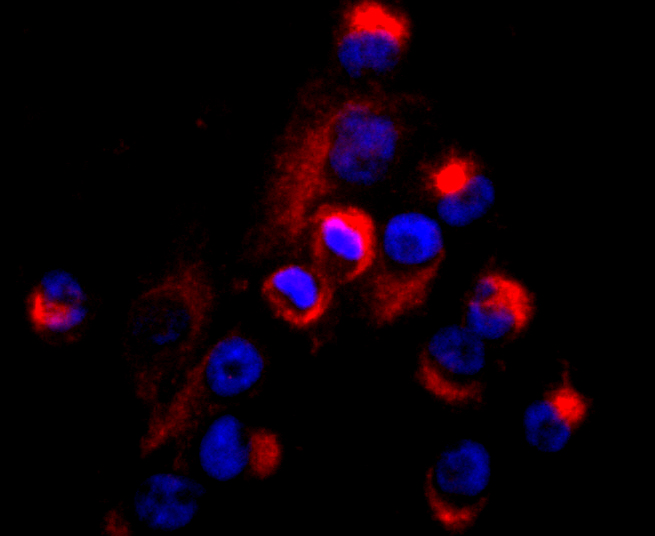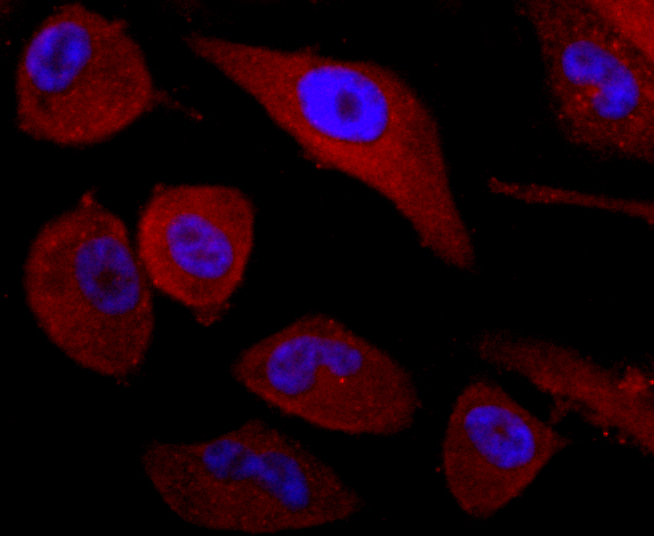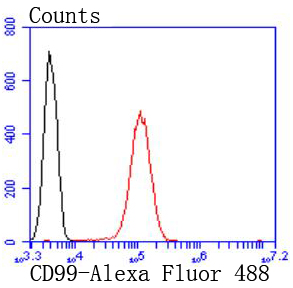MIC2, also designated CD99, is a T cell surface protein that is involved in the aggregation of lymphocytes. Two forms of MIC2, which are differentially expressed, are produced by alternative splicing. The major form induces cellular adhesion, whereas the truncated form inhibits the adhesion process. MIC2 regulates the LFA-1/ICAM-1-mediated adhesion of lymphocytes. Overexpression of the truncated form results in downregulated expression of LFA-1. Cells with downregulated MIC2 exhibit a Hodgkin's and Reed-Sternberg (H-RS) phenotype, indicating that MIC2 plays an important role in regulating cell function and morphology.


